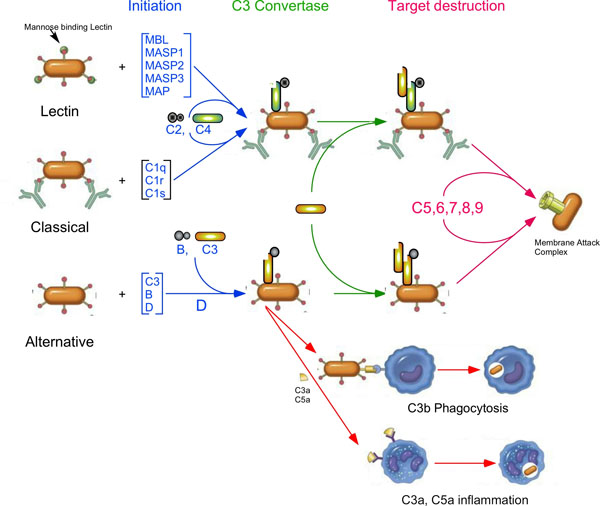Fig. (1) Complement activation pathways, showing final activation products, such as C3b (or C3dg) on cell surfaces, the Membrane Attack Complex (MAC) and the anaphylatoxins produced during complement activation. The three activation pathways (blue) meet at the C3 activation step (green), where the activated C3 is bound covalently on the target cell surface. Complement activation can cause pain in three ways (red). First, the MAC can lyse cells. Second, cells with bound C3b (or C3dg) are targeted for phagocytosis. Finally, the anaphylatoxins C3a and C5a can bind to their receptors (C3aR and C5aR, respectively), attracting macrophages which cause inflammation.

